I have more Commander decks than I have time to play Commander. I write about deck doctoring because I love the build process, but as my adult life has intruded more and more upon my free time, it’s left me with less time to actually play with my creations.
This is exacerbated by the fact that many of my decks have thematic overlaps with one another. There’s no deck that’s functionally a subset of another, but there are decks that share base elements; Alesha, Who Smiles at Death and Tymaret, the Murder King both share a fair number of sacrificial elements, for example.
Every once in a while, this means that I have to compress two decks into one because I just don’t have the time to play with both of the themes if they’re separately isolated. Typically, it’s a multi-step process, in which I first cut each of the two decks down to the core elements that are drawing my attention, and then subsequently try to build connective tissue between the two skeletons through the use of cards that can be useful for either archetype.
I pause to note that at some point during that last metaphor I started to talk like Stitcher Geralf. Hooray?
Generally, these types of fusion decks require a fair bit of polishing. Not all synergies that look powerful on paper actually materialize when you’re playing through, and all too often I find that sentimentality or some other emotional bond with specific cards can lead to keeping them in the deck for longer than is strictly advisable.
It’s a process.
Anyway, I was reminded of all this when I stumbled upon this week’s Dear Azami submission from Norman. Norman, take it away!
Dear Azami,
This was brought on by seeing one of the new Origins previews — no, not one of the flip planeswalkers or the legendary creatures. Instead, this flash of inspiration? madness? came courtesy of… Hangarback Walker. I found myself thinking, “Gee, that would be fun to cast for free off of an Animar with a bunch of counters on it.” And then “But it would also maybe go well in my Karn deck, with all the artifacts.” And then: “You know, neither of those decks have really been inspiring me lately… but what if I mashed them together?”
So here’s where I turn to you for advice. One is currently a deck full of proliferate and counter manipulation with an Elemental tribal sub-theme. The other is full of big artifact creatures and unwieldy combos that never quite seem to come together. Is there any way these could be combined into a single, functional deck that combines the proliferation and the artifact creatures? And what missing cards might be the glue that would hold together such an elementally mechanical monstrosity?
The decks:
ANIMAR, SOUL OF ELEMENTS
7 Forest
8 Island
5 Mountain
Breeding Pool
Command Tower
Frontier Bivouac
Fungal Reaches
Gruul Guildgate
Gruul Turf
Izzet Boilerworks
Izzet Guildgate
Kazandu Refuge
Opal Palace
Oran-Rief, the Vastwood
Primal Beyond
Rugged Highlands
Simic Guildgate
Simic Growth Chamber
Steam Vents
Stomping Ground
Swiftwater Cliffs
Thornwood Falls
Vivid Crag
Wooded Foothills
Flamekin Harbinger
Brighthearth Banneret
Gyre Sage
Sage of Hours
Smokebraider
Zameck Guildmage
Fertilid
Incandescent Soulstoke
Plaxcaster Frogling
Rage Forger
Sage of Fables
Scourge of Skola Vale
Tuskguard Captain
Vorel of the Hull Clade
Briarhorn
Fathom Mage
Forgotten Ancient
Mindless Automaton
Nevermaker
Sporeback Troll
Spike Weaver
Stingmoggie
Viral Drake
Battlefront Krushok
Glarewielder
Helium Squirter
Ingot Chewer
Mulldrifter
Plaguemaw Beast
Species Gorger
Aethersnipe
Draining Whelk
Morselhoarder
Novijen Sages
Spitebellows
Faultgrinder
Hamletback Goliath
Sandsteppe Mastodon
Solarion
Supreme Exemplar
Suncrusher
Apocalypse Hydra
Nimbus Swimmer
Astral Cornucopia
Everflowing Chalice
Hardened Scales
Contagion Clasp
Hull Breach
Cloudstone Curio
Give//Take
Ion Storm
Magistrate’s Scepter
Volt Charge
Fuel for the Cause
Krasis Incubation
Tezzeret’s Gambit
Inexorable Tide
Contagion Engine
KARN, SILVER GOLEM
42 Assorted Colorless Lands
Myr Retriever
Pili-Pala
Steel Overseer
Etched Champion
Junk Diver
Myr Welder
Scarecrone
Arcbound Crusher
Dross Scorpion
Lodestone Golem
Voltaic Construct
Clockwork Hydra
Scuttling Doom Engine
Steel Hellkite
Thopter Assembly
Triskelion
Myr Battlesphere
Pentavus
Phyrexian Colossus
Platinum Angel
Triskelavus
Colossus of Akros
Colossus of Sardia
Darksteel Colossus
Everflowing Chalice
Brittle Effigy
Elixir of Immortality
Mana Vault
Sol Ring
Skullclamp
Viridian Longbow
Voltaic Key
Mind Stone
Grinding Station
Throne of Geth
Ashnod’s Altar
Basalt Monolith
Blasting Station
Crucible of Worlds
Crystal Ball
Heartstone
Rings of Brighthearth
Staff of Domination
Clock of Omens
Goblin Cannon
Prototype Portal
Rocket Launcher
Thran Dynamo
Tower of Calamities
Tower of Fortunes
Trading Post
Unwinding Clock
Predator, Flagship
Salvaging Station
Spine of Ish Sah
Summoning Station
Darksteel Forge
I’ve been reading your column for a long time, and I appreciate your consideration!
Thanks,
Norman Dean
This struck me as an interesting challenge. Animar, Soul of Elements is one of those commanders whose inherent power level (and the occasional trampling of black and white decks) makes it easy to forget that there are many interesting things you can do with its cost-reduction ability. I like Animar for morph strategies, personally, but I’ve also seen Animar tribal, Animar hydras, and now we’re going to spend some time digging into Animar artifacts.
Animartifacts? No, that’s too cute by half.
Due to the reconciliation process, I’m going to be breaking from format a bit. Instead of going through all the cards I cut and what I replaced them with, I’m just going to focus on the final result. That will give me a chance to talk about why I kept the elements I kept, and why I added the cards I decided to add. As such, there are going to be powerful cards that I have cut and will not spend much time discussing. An example of those types of cards is Magistrate’s Scepter, which seems like an obvious connection between proliferation and artifact themes. I cut it, though, because the deck needed some more open slots, and because extra-turn-taking tends to extend the games in which it doesn’t immediately go infinite and kill everyone.
If you think I’ve cut something inexcusable, you can always let me know in the comment section. While I don’t have Facebook myself, I’m sure someone else in the comments will have something to add to your opinion. That’s what they’re there for, no?
The Lands
Kept (30):

















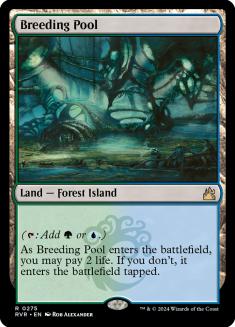
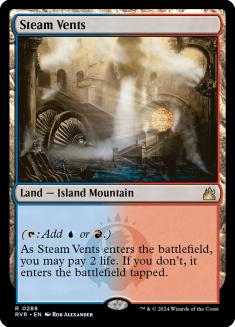
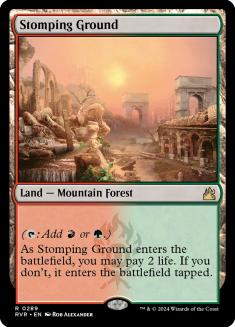
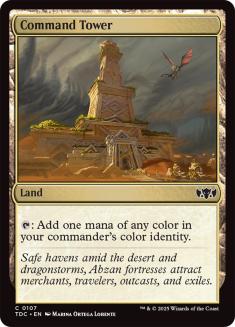
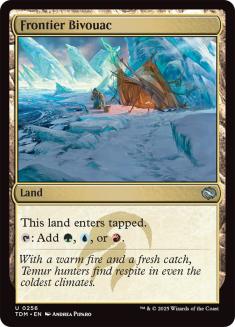
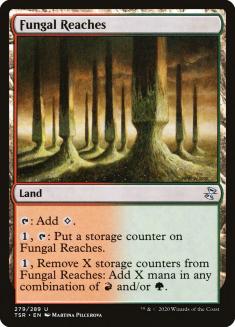
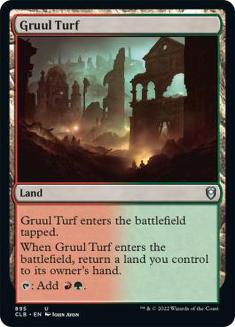
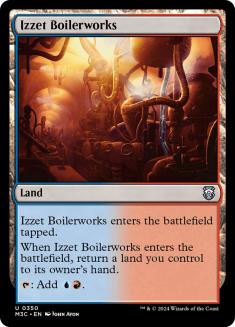
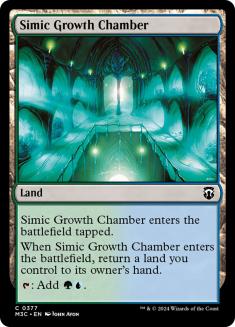
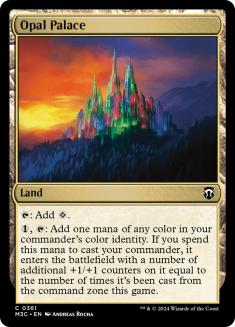
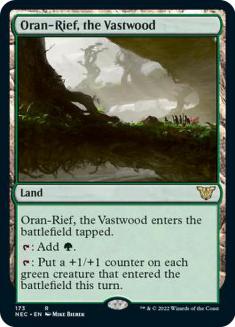
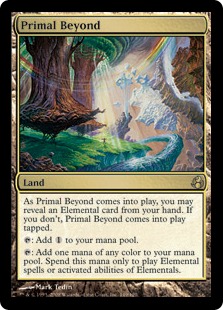
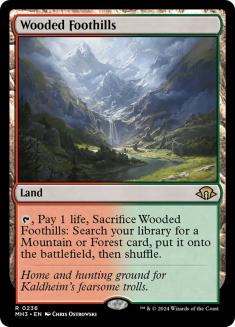
Added (8):
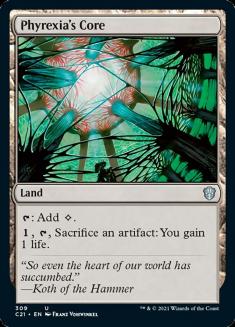
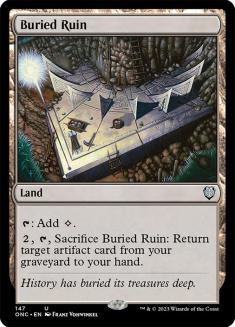
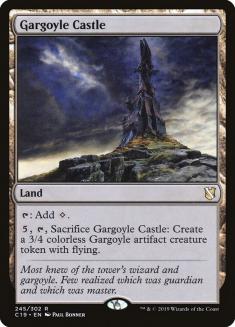
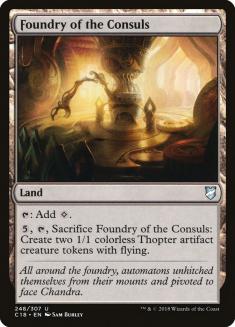
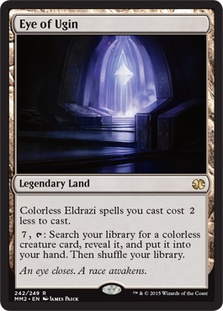
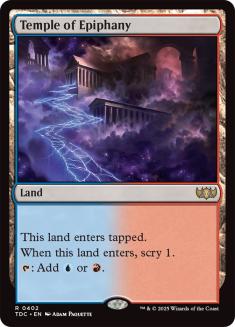
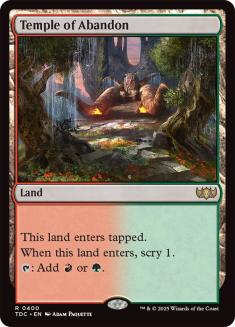
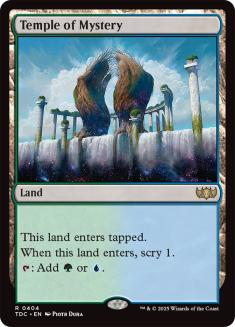
I kept most of the manabase from Animar, since it was pretty solid. It did clock in at 41 lands, though, which seemed a bit much given the cost-reduction ability and the many ramp cards. I lopped off three basics to bring the list down to 38 lands; from there I knew I wanted to add some of the better colorless lands to support where the deck was going to be headed.
I decided to cut back on the enters-the-battlefield-tapped lands, including the lone Vivid Crag. The Refuge/Khans cycle only offer the minimal benefit of one life, and the Guildgates don’t even offer that (unless you’re playing with something like Maze’s End, a defensible decision in a tri-color deck). I didn’t want to add in seven colorless lands, and I contemplated keeping one of the two cycles before I realized that neither was the cycle of taplands I wanted. So I cut them both and brought in the Temples of Theros to replace them, basically the best taplands in the game right now.
I also brought in some utility lands that were likely in Karn, Silver Golem: Buried Ruin, Eye of Ugin, and Phyrexia’s Core. Phyrexia’s Core is a utility land with a specific synergy with Spine of Ish Sah… while it’s often useful elsewhere, it’s really in that context where the card shines. Buried Ruin is a “break in case of emergency” way to recur your artifacts, and Eye of Ugin is fairly useless as lands go but offers the ability to search up action when the game goes late.
Finally, I also brought in Gargoyle’s Castle and Foundry of the Consuls because they create artifact tokens. This was going to be relevant, because the switch-over to Animar gave me an opportunity to bring in a few new token multipliers.
The Multipliers
Kept (2):
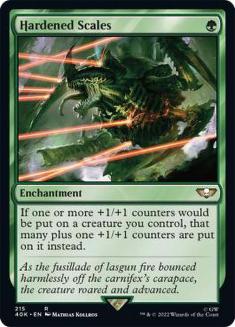
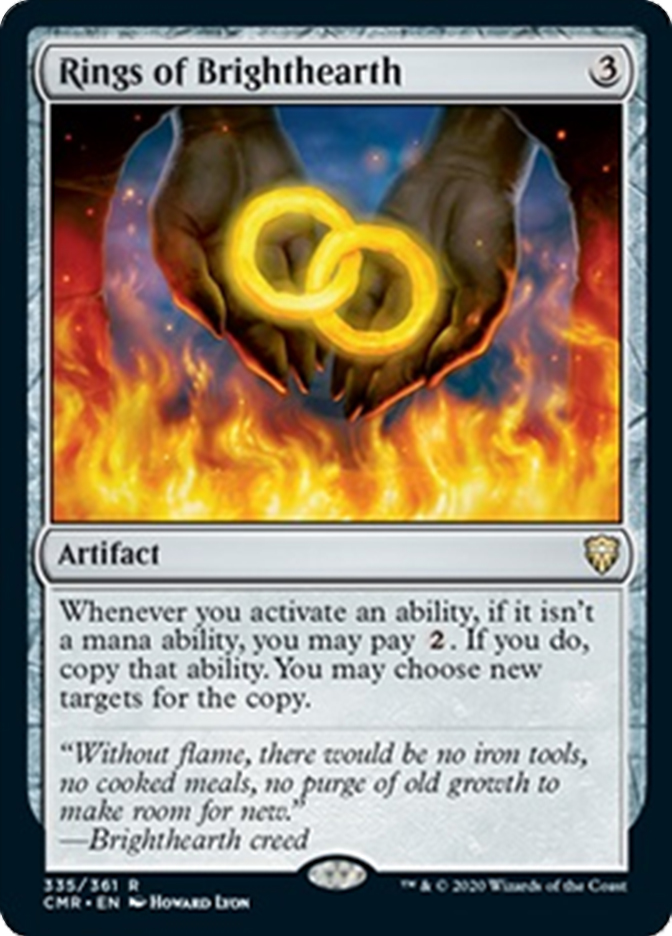
Added (3):
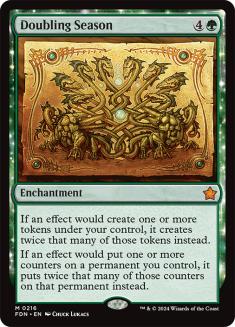
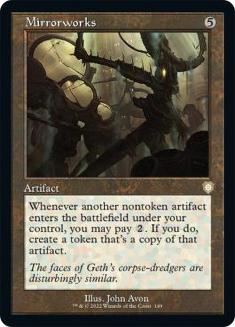
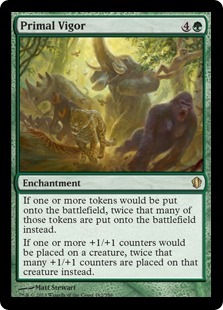
I looked at this deck, with cards like Prototype Portal, a commander who gets better when you jack up its counter count, and a proliferation subtheme, and I couldn’t stop thinking about how much fun it would be to add Doubling Season to the mix. Hardened Scales was already moving the deck in that direction, and Doubling Season plays well with Hardened Scales (you order the modifications so that the one gets applied before the total is doubled). In fact, I grew so enamored with the theme that I also brought in Primal Vigor under the assumption that the proliferation deck was going to make better use of the card’s symmetry.
Plus, Primal Vigor occasionally has interesting political aspects since it gives other players who are gaining value from the card an incentive to leave you alone.
Rings of Brighthearth stayed in because it plays so well with Contagion Engine and Contagion Clasp, but it has several other relevant synergies, including giving you more tokens off Gargoyle Castle and Foundry of the Consuls.
Finally, I brought in Mirrorworks. I think there are three cards that could fit this slot, and yet I don’t think you want more than one of them. Basically, it’s Flameshadow Conjuring, Minion Reflector, or Mirrorworks. Each one of them has its own benefits: Minion Reflector always gives you death triggers, Flamshadow Conjuring is cheapest (if picky about what mana it runs on), and Mirrorworks creates tokens that stick around for good. In the end, given the artifact theme, I went with Mirrorworks; if you’re less of a fan of that card (which can become onerous to represent outside of MTGO), feel free to choose one of the other two instead.
The Artifacts-Matter Cards
Added (8):

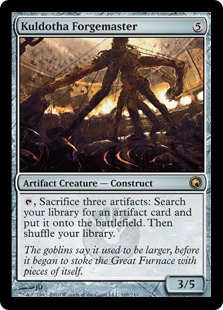
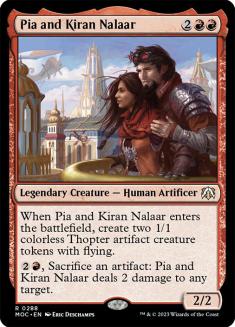
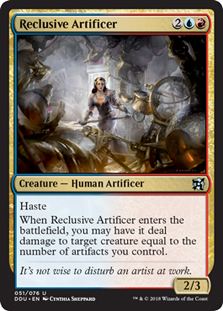
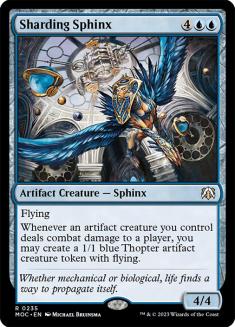
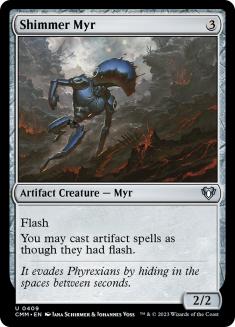
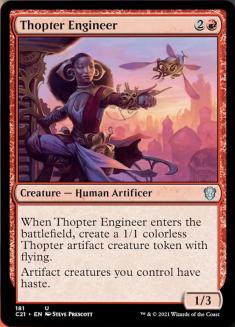
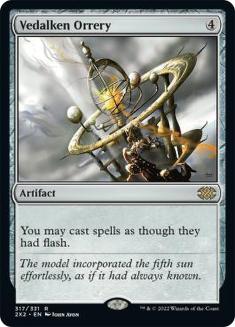
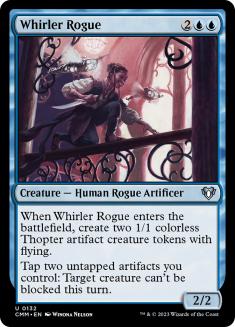
While I kept many artifacts across the two decks, there were not a ton of “artifacts matter” cards in there that weren’t better categorized as token generators or proliferation engines. Still, moving to Animar, Soul of Elements means that you have a lot of Temur options to play with, many of which are new cards.
For example, Thopter Engineer is a new card that, while not incredibly powerful, provides a useful ability to your artifacts (haste!) and also makes an artifact token when it comes into play. Whirler Rogue and Pia and Kiran Nalaaar both also come with two Thopters apiece, but they further have activated abilities you can copy with Rings of Brighthearth. The abilities are decent on their lonesome; with Rings in play, the benefit-to-cost ratio tilts more steeply in your favor.
Reclusive Artificer is an artifacts-matter-themed removal Mulldrifter; once Animar is on the board, you’re often going to be paying just a red and a blue to do a fair bit of damage to some offending creature.
Sharding Sphinx is a force multiplier, in that it turns all your artifacts into potential Populators. Speaking of Population, I was playing in a Commander game last weekend in which a player (Rob) attacked with several soldier tokens, and then after the blocks were declared, he used Polymorphous Rush to turn the unblocked tokens into copies of Wayfarer’s Temple, which then populated themselves. That’s not super-relevant to this discussion but it was pretty cool, and it’s the type of outside-of-the-box play that lingers in one’s consciousness.
Anyway, Vedalken Orrery and Shimmer Myr both let you play artifacts at instant speed, which cuts back against one of the drawbacks in playing a deck heavy on creatures, particularly artifact ones. This way, if you don’t have haste online you can minimize your vulnerability by dropping your action into play during an opponent’s end step (usually the one whose turn leads into yours, but sometimes a Dragonlord Dromoka or whatnot means you have to pull the trigger a little bit before the ideal window).
Finally, there’s Kuldotha Forgemaster. Usually that thing gets killed on sight, but with all these different ways to make Thopter tokens you’re probably going to be spending fewer resources to acquire the benefit… which in this deck is probably going to be Contagion Engine a fair bit of the time. I mean, that’s exactly why I am a little bored with tutor options, but I like the way that the Forgemaster forces you to make choices; Demonic Tutor is restricted in Vintage because it requires little in the way of thought, preparation, or even resources.
The Proliferation Subtheme
Kept (15):
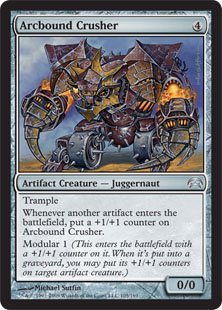
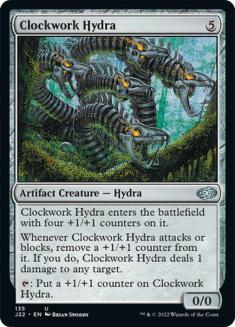
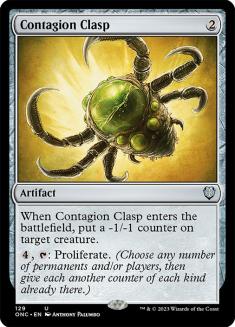
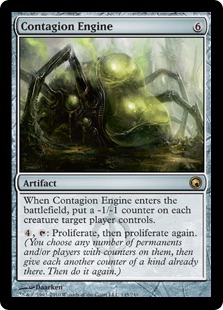
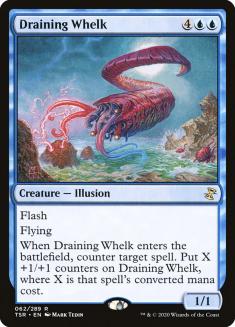

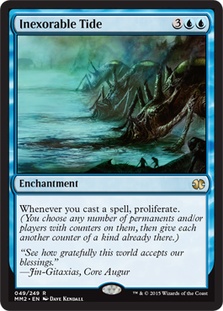
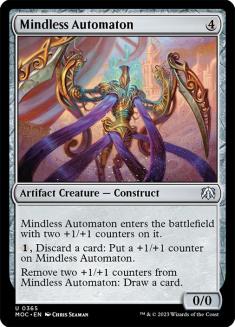
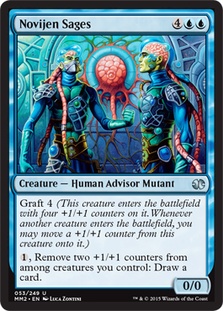
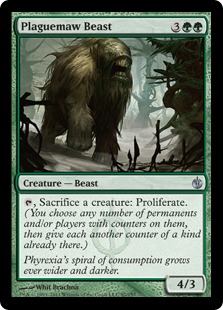

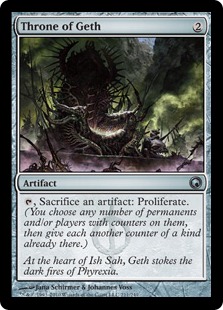
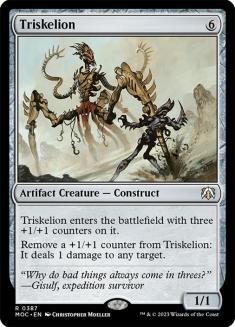
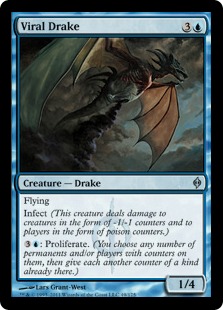
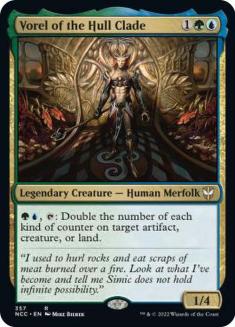
Added (2):
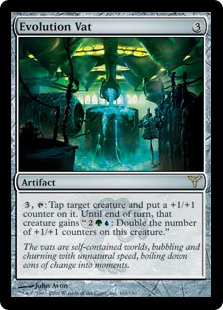
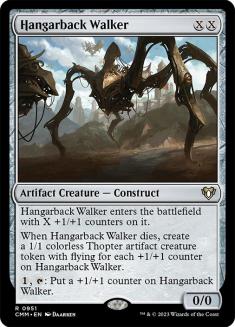
I, too, have been excited at the prospect of playing with Hangarback Walker. It’s probably not going to be an amazing card, but it has a lot of potential. Any card that replaces itself after it gets removed is going to be worth a second glance in Commander; something like Hangarback Walker, which can crank its own counters should you run out of better options, will fit right into the meta, I suspect.
Anyway, the proliferation cards I kept separated out into a couple of different themes. First, we have the proliferation engines. These are the cards like Contagion Engine, Vorel of the Hull Clade, Viral Drake, and Throne of Geth, all of which allow you to proliferate over and over again. This also loosely covers cards like Forgotten Ancient and Steel Overseer. Few options are as bonkers as Inexorable Tide, which I once saw rounding out the loop in a Teferi, Temporal Archmage / The Chain Veil combo deck. It was pretty threatening, let me tell you! But even slower cards like Plaguemaw Beast or Contagion Clasp are powerful in their own way.
Then there are the ones that turn those counters into something. Clockwork Hydra slowly turns them into damage, while Triskelion does something similar, in a way that sets off the sort of alarm klaxons that Clockwork Hydra just will not provoke. On the other end of things, you have Novijen Sages and Mindless Automaton, both of which let you transmute those tokens into raw cards.
Finally, I added in Evolution Vat. I had wanted to take out Krasis Incubation because as an Aura it seemed a little off-theme, but I wanted there to be some slow pseudo-removal option that also let you burn spare mana off into counters for your team. Evolution Vat strikes this balance. In a pinch, you can use it as a tap effect, particularly if someone has a Sword or something similar that’s preventing you from using a colored spell to interact with it; once you hit seven mana, you can use it to double the counters on Animar, Soul of Elements. And that seems like a pretty powerful thing to do.
The Tokens Subtheme
Kept (6):
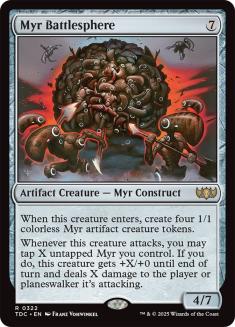
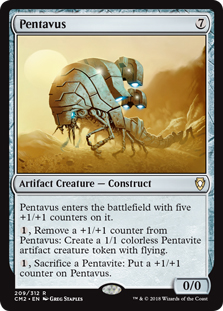
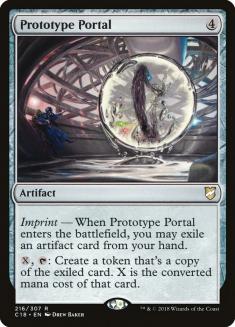
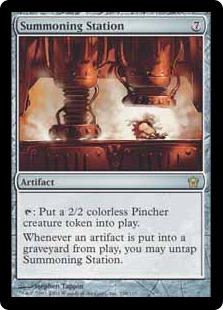
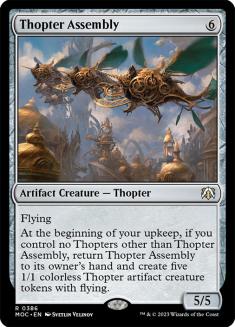
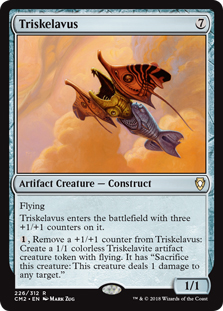
Added (1):

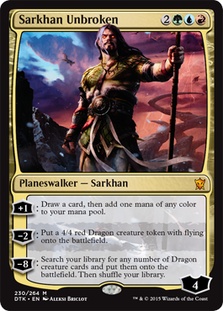
I added Doubling Season to your deck and then brought in one of the few planeswalkers who cares very little about Doubling Season’s ultimate ability. Sure, in a pinch you can drop Sarkhan Unbroken, insta-ultimate the guy, and then search your library for any number of Dragons… but that number is one, albeit a good one (Steel Hellkite). No, most of the time you’re going to be using the Unbroken One to give you a little big of defense in the air while he draws you cards and ramps your into other solutions.
Plus, you can only play Sarkhan Unbroken in Temur and Rainbow decks, and the card is a lot of fun once it hits the board.
Myr Battlesphere is a great card in Commander, so I kept it in. Not only does it generate tokens, it also blocks like a champ and occasionally it lets you take out a planeswalker with its direct damage effect. Should you ever get to drop a Myr Battlesphere for free, I think you’re going to feel pretty good about that play sequence.
Pentavus and Triskelavus are both cards that are decent when you have a proliferation engine in play and downright bonkers when you have Doubling Season or Primal Vigor on the battlefield. Either way allows you to net up Thopters, but Doubling Season lets you grow Pentavus for two mana, leaving you with a token and a bigger Pentavus; Triskelavus tokens are explosive, so doubling them on a battlefield gives you a lot of options even if you have to keep one or two on the main body to proliferate.
Prototype Portal is also pretty gross when you have a token multiplier in play since it lets you get two permanent artifact tokens per activation instead of one. It’s still a high-risk card to play since you risk getting two-for-oned if you can’t drop it and immediately use it for value, but between Doubling Season and Rings of Brighthearth the upside is worth the risk.
Thopter Assembly plays well with the non-Thopters and less well with the newly added Thopter cards, but it’s really in there because being able to bounce it and recast it fairly regularly helps to feed your Animar, Soul of Elements. Summoning Station is interesting, because it lets you turn your dead Thopter tokens into live colorless “Pinchers.” That may seem like a mediocre ability, but it helps you rebuild after a Wrath so long as you remember to stack those triggers right!
The Ramps
Kept (6):

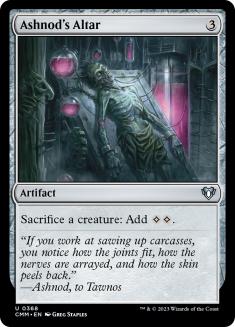
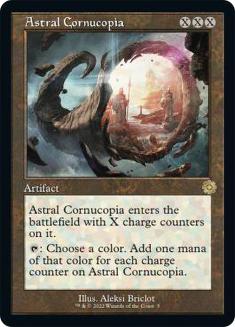
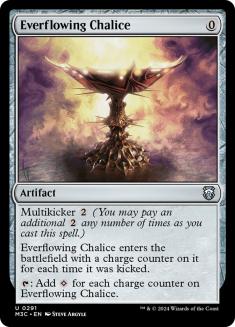
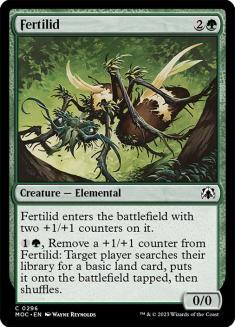
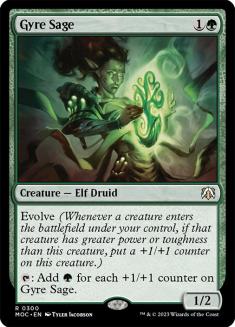
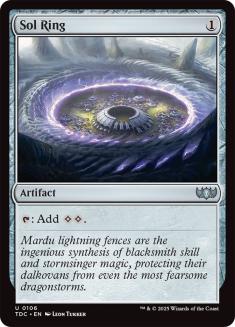
Added (2):
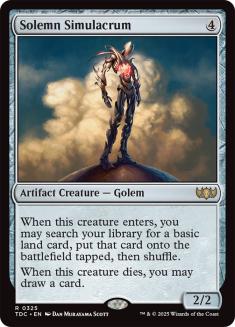

Ashnod’s Altar is one of those beautiful cards that they’ll never make again. It’s really powerful, and it excels in token strategies. An unintended combo, for example, would be Ashnod’s Altar, Pentavus, and one of the Doubling Season effects. That lets you grow an infinitely-large Pentavus, and it was a completely inadvertent addition to the deck when I was putting this together. But that’s why I build for synergy: if your cards work well together, you get to make weird combinations that do powerful, if unexpected, things.
Astral Cornucopia and Everflowing Chalice are both cards that let you ramp with every Proliferate trigger. Gyre Sage works similarly, but because it’s tied to a creature it’s differently powerful. Fertilid also lets you turn those proliferation triggers into ramp, but that requires a mana investment. Still, being able to Rampant Growth over and over again is a strong option even if it’s not the most cost-efficient means of ramping. You’re going to be cutting down on the mana you’re spending on your creatures, though, so you probably don’t have to be as efficient as possible when you’re considering your activated abilities.
Solemn Simulacrum is another Rampant Growth option, only this one does well when you copy it with Prototype Portal or Mirrorworks. And Sword of the Animist may be the spiciest card they printed for Commander players in Magic Origins… although the planeswalker commanders certainly score a close second.
Finally, I left in Sol Ring because this is an artifacts deck and it’s Sol Ring. Amusingly, it’s less powerful in this deck than it is in many others… it doesn’t let you play your commander on turn two, and when Animar is really rolling you can’t even spend that colorless mana on any of your creature spells.
The Removal
Kept (4):

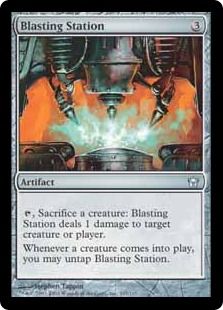
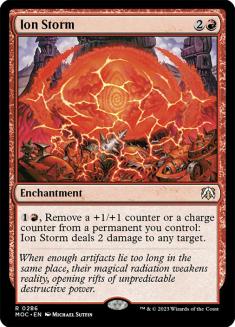
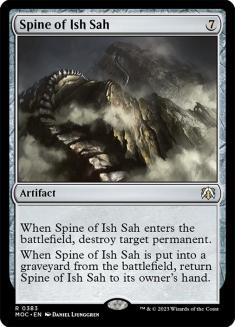
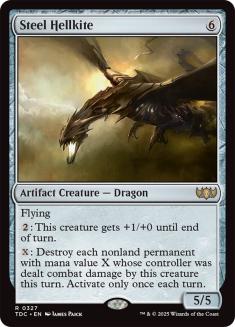
Added (3):

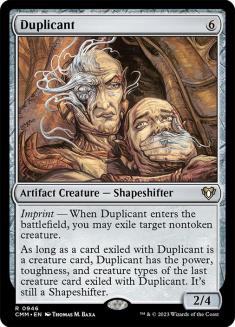
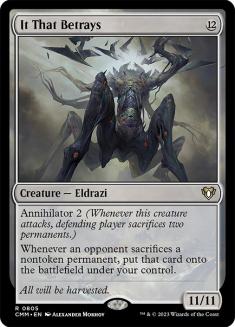
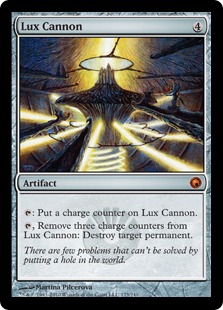
I like cards like Blasting Station because any sacrifice outlet that can convert a sacrificial creature into a removal option does wonders to complicate the board state. What’s particularly interesting to me, though, is that if you have a Summoning Station and a Blasting Station, you get to sacrifice a Thopter to Blasting Station, hold priority, make a Pincher, untap Blasting Station, untap Summoning Station from the Thopter’s death trigger, sacrifice the Pincher, create another Pincher, untapping the Blasting Station, and then sacrifice the newest Pincher to blast again. That turns your initial Thopter investment into an Arc Lightning, and that’s a super fun, if tetchy, sequence of plays.
Ion Storm works well with anything that’s proliferating counters since it lets you Shock for a relatively low mana/resource investment. Spine of Ish Sah is wonderful removal, and now that you’re also running Phyrexia’s Core you can get that little nine-mana loop online. Finally, Steel Hellkite is a shotgun that shoots scalpels, and that’s kinda terrifying to think about.
I brought in Duplicant because I felt you could use some more removal/artifacts to go with the theme. Lux Cannon is to help with the Proliferate subtheme, although it also plays really well with Rings of Brighthearth and Doubling Season.
Finally, it probably seems weird to have It That Betrays in the removal section, but once it hits the board you basically get to Abyss a player every turn if that suits your playstyle. Personally, I like to sit back behind it and just hoover up my opponents’ sacrificed permanents. People get irrationally annoyed when you annihilate them.
Shocking, I know!
The Recursion
Kept (3):

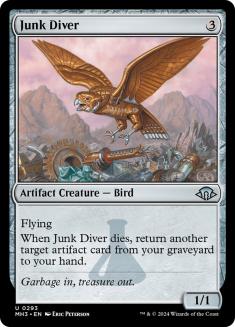
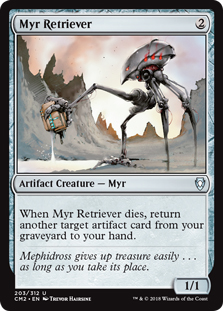
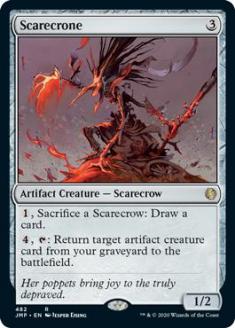
Added (1):

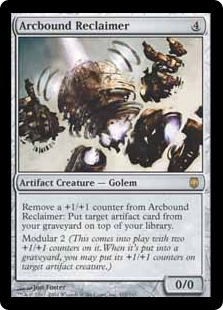
These three cards were snap keeps. Junk Diver and Myr Retriever both loop rather well, and Scarecrone not only offers repeatable resurrections, it even sacrifices itself for a card in a pinch. Still, I wanted to somewhat minimize the reliance on graveyard manipulation in this deck since it’s already pretty stuffed full with token and proliferate themes; these are here more as an emergency exit than a planned path to victory.
That having been said, Arcbound Reclaimer works so well with Proliferation that I felt it was begging to be let in. As it is not a vampire, this seemed like a reasonable request to me.
The Draw
Kept (3):
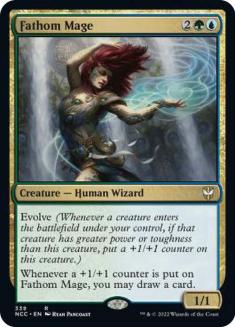
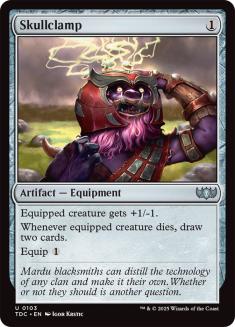
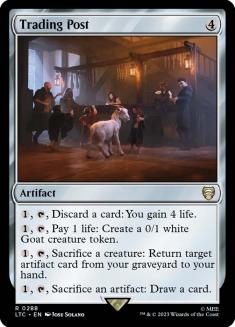
Added (2):

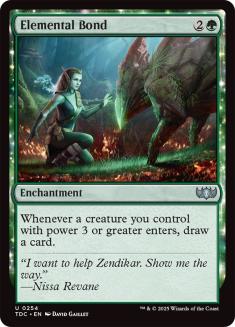
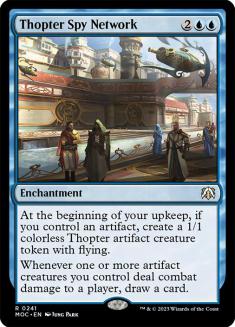
Finally, we’re at the drawing cards section. This is fairly light, all things considered… but generally I try to have around fifteen draw engines in my decks, so it’s almost certainly my priorities that are skewed. Still, there are some good ones here. Fathom Mage does gross stuff with Pproliferate, and it’s even more bonkers when combined with something like Evolution Vat. Seven mana to draw all of the cards! seems like a pretty good deal.
Skullclamp is strong in any deck, but much stronger when that deck involves making 1/1 tokens. Skullclamp is basically a sacrifice engine for tiny tokens, allowing you to convert each 1/1 into a pair of cards for a single mana. It’s a card so good that it’s banned in Legacy, Modern, and even Block Constructed. But it’s legal in Commander, so have at it!
Trading Post is here because of the incredible utility it offers. You can do almost anything with that card: draw cards, make bodies, gain life, recur artifacts. It’s like the colorless Bow of Nylea, only it’s not legendary and you can use it as a sacrifice engine as well.
Which brings us to my last additions: Elemental Bond and Thopter Spy Network. It’s possible Elemental Bond would be a worse inclusion than something like Vedalken Archmage, but I’m excited that people get to play with this next week. They took Garruk’s Packleader, which was already a pretty solid draw engine, and they made it more resilient. To me, that’s going to be fun card, and I’m still at the “jam it into everything” stage since the set is on the cusp of coming out.
Thopter Spy Network compares poorly to Bident of Thassa or Coastal Piracy if you were just looking at the draw clause, but it also creates tokens fairly reliably. Even if you get your creatures wiped, it still triggers off your mana rocks and whatnot so it’s going to be a rare turn that doesn’t begin with you making a Bitterblossom-esque token (sans drawback).
The List
Creatures (34)
- 1 Myr Retriever
- 1 Solemn Simulacrum
- 1 Triskelion
- 1 Forgotten Ancient
- 1 Duplicant
- 1 Arcbound Reclaimer
- 1 Arcbound Crusher
- 1 Pentavus
- 1 Mindless Automaton
- 1 Junk Diver
- 1 Novijen Sages
- 1 Clockwork Hydra
- 1 Draining Whelk
- 1 Triskelavus
- 1 Fertilid
- 1 Scarecrone
- 1 Sharding Sphinx
- 1 It That Betrays
- 1 Steel Overseer
- 1 Steel Hellkite
- 1 Kuldotha Forgemaster
- 1 Myr Battlesphere
- 1 Thopter Assembly
- 1 Shimmer Myr
- 1 Plaguemaw Beast
- 1 Viral Drake
- 1 Fathom Mage
- 1 Gyre Sage
- 1 Vorel of the Hull Clade
- 1 Pia and Kiran Nalaar
- 1 Hangarback Walker
- 1 Whirler Rogue
- 1 Reclusive Artificer
- 1 Thopter Engineer
Planeswalkers (1)
Lands (40)
- 6 Forest
- 1 Wooded Foothills
- 5 Mountain
- 6 Island
- 1 Gruul Turf
- 1 Izzet Boilerworks
- 1 Steam Vents
- 1 Stomping Ground
- 1 Breeding Pool
- 1 Simic Growth Chamber
- 1 Fungal Reaches
- 1 Primal Beyond
- 1 Gargoyle Castle
- 1 Oran-Rief, the Vastwood
- 1 Phyrexia's Core
- 1 Command Tower
- 1 Buried Ruin
- 1 Izzet Guildgate
- 1 Simic Guildgate
- 1 Gruul Guildgate
- 1 Temple of Abandon
- 1 Temple of Mystery
- 1 Opal Palace
- 1 Temple of Epiphany
- 1 Frontier Bivouac
- 1 Foundry of the Consuls
Spells (26)
- 1 Sol Ring
- 1 Ashnod's Altar
- 1 Skullclamp
- 1 Vedalken Orrery
- 1 Summoning Station
- 1 Ion Storm
- 1 Blasting Station
- 1 Doubling Season
- 1 Evolution Vat
- 1 Rings of Brighthearth
- 1 Everflowing Chalice
- 1 Contagion Clasp
- 1 Contagion Engine
- 1 Prototype Portal
- 1 Throne of Geth
- 1 Inexorable Tide
- 1 Lux Cannon
- 1 Spine of Ish Sah
- 1 Mirrorworks
- 1 Trading Post
- 1 Primal Vigor
- 1 Astral Cornucopia
- 1 Hardened Scales
- 1 Elemental Bond
- 1 Thopter Spy Network
- 1 Sword of the Animist

If you want a more detailed look at the way this all breaks down, here is a borderline incomprehensible diagram, complete with superfluous and counterintuitive color-coding. Because that’s how I roll!
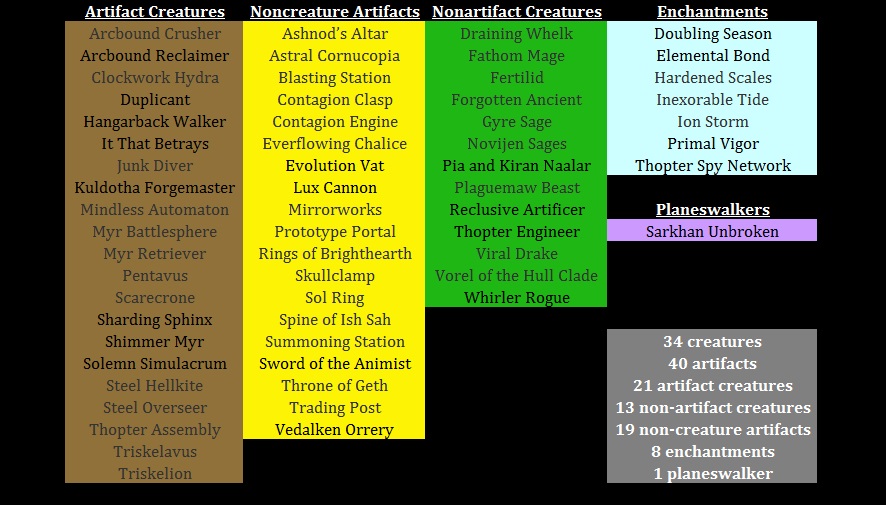
As you can see above, 34 creatures means that a solid third of your deck should have a direct interaction with your commander. This is good if you have Animar in play, but it leaves you with options if playing Animar would be impolitic – for example, if there’s an Orzhov player who is going to view your commander as an invitation to target you as soon as it hits the table. 40 of the cards are artifacts, including a fair number of ramp options and a solid 21 artifact creatures. There are still some enchantments, and a planeswalker, but all in all the elements of the deck should play well together.
The Price
In the absence of a set budget, I used my discretion. In this case, that meant “make the changes you think would be fun, and then boggle at how expensive some of these cards have gotten.” There was a point, right after Modern Masters 2013, when Doubling Season was not an overly expensive card. As-is, it’s probably worth it. It’s a lot of fun to play with, and it’s a rare day that you need more than one of the things.
This is a long way for me to go to delay admitting that this particular build went over $100, albeit barely. Luckily, Norm will get a $20 StarCityGames.com store credit for submitting such an interesting deck challenge. When submitting a deck, don’t be afraid to try something new; some of the most memorable submissions I’ve chosen in the past have involved straying from the formula in interesting ways. This wasn’t Geralf Goes Fishing, but it was still a pretty interesting submission to tackle.
Anyway, here’s the price breakdown:
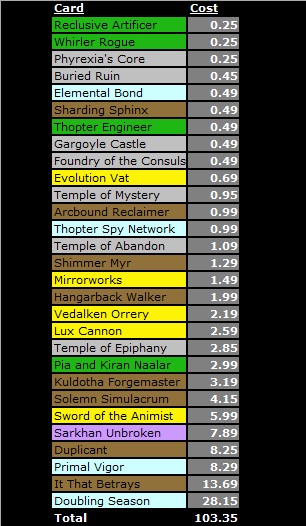
While Doubling Season has gone up, it was actually It That Betrays I found the most surprising. At almost $14, it would probably make an interesting backup Eldrazi in the next Duel Decks product.
That’s it for this week’s Dear Azami! If you want to read more, feel free to follow my HipstersoftheCoast.com article series, Command of Etiquette, in which I discuss Commander, Magic’s culture, and occasionally other casual gaming stuff. And tune in next week for more Dear Azami! As long as you keep submitting decks to us at DearAzami [at] gmail [dot] com, we’ll keep doctoring them!
Want to submit a deck for consideration to Dear Azami? We’re always accepting deck submissions to consider for use in a future article. Only one deck submission will be chosen per article, but being selected for the next edition of Dear Azami includes not just deck advice but also a $20 coupon to StarCityGames.com!
Email us a deck submission using this link here!
Like what you’ve seen? Feel free to explore more of Dear Azami here, in the Article Archives! And feel free to check Jess’s own Command of Etiquette column on Hipsters of the Coast, for more Commander and casual content. Now on Thursdays!
